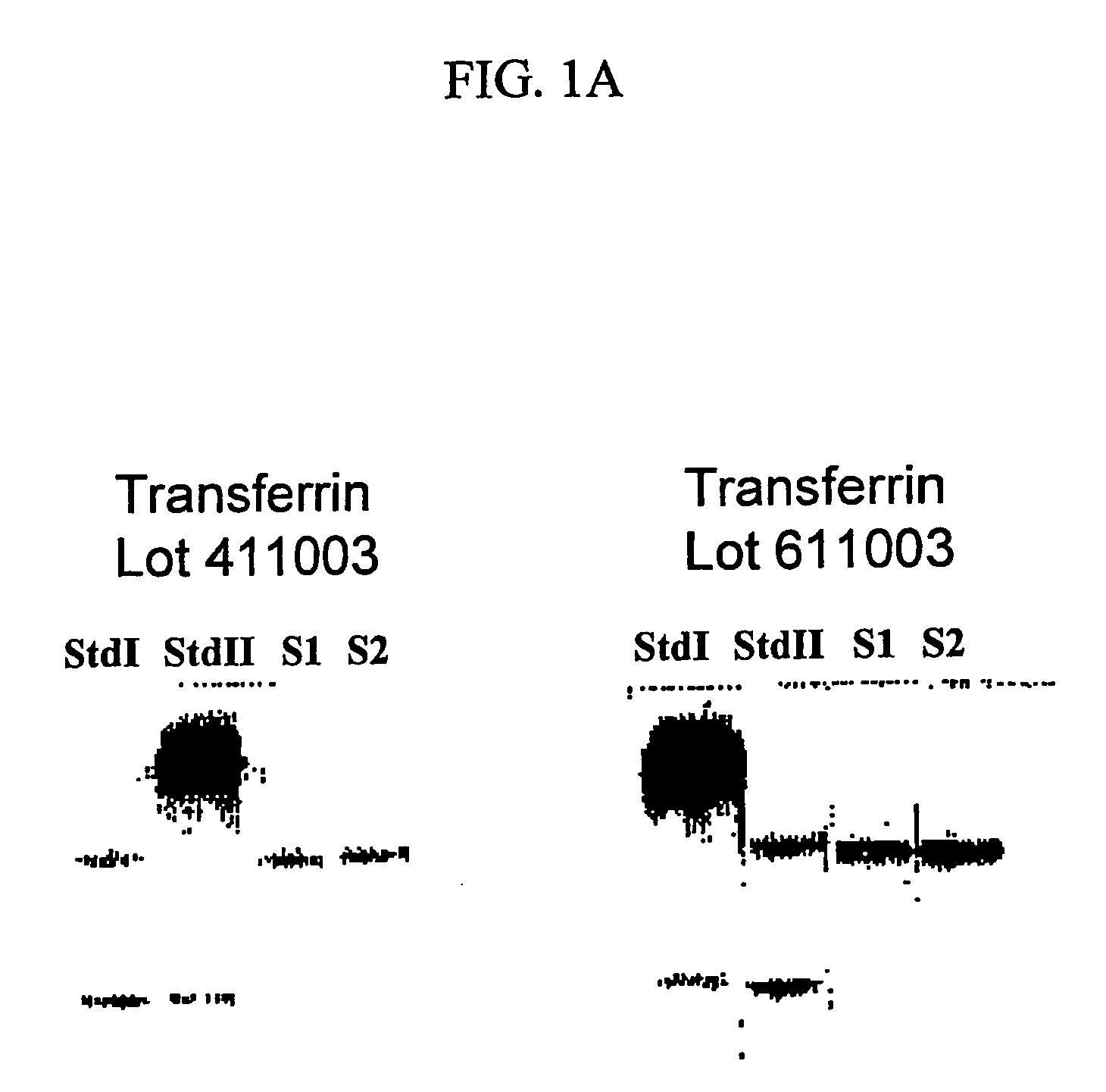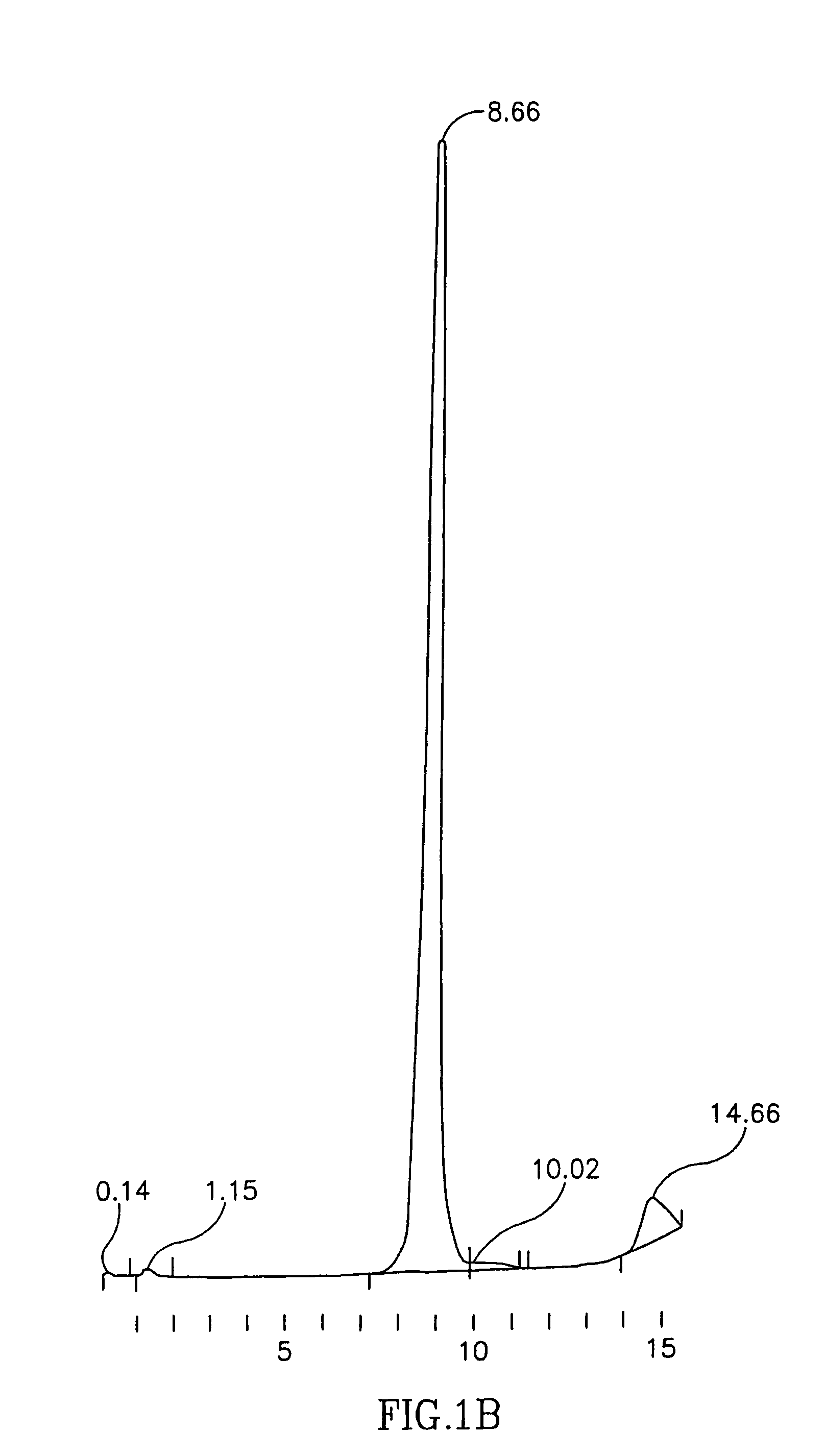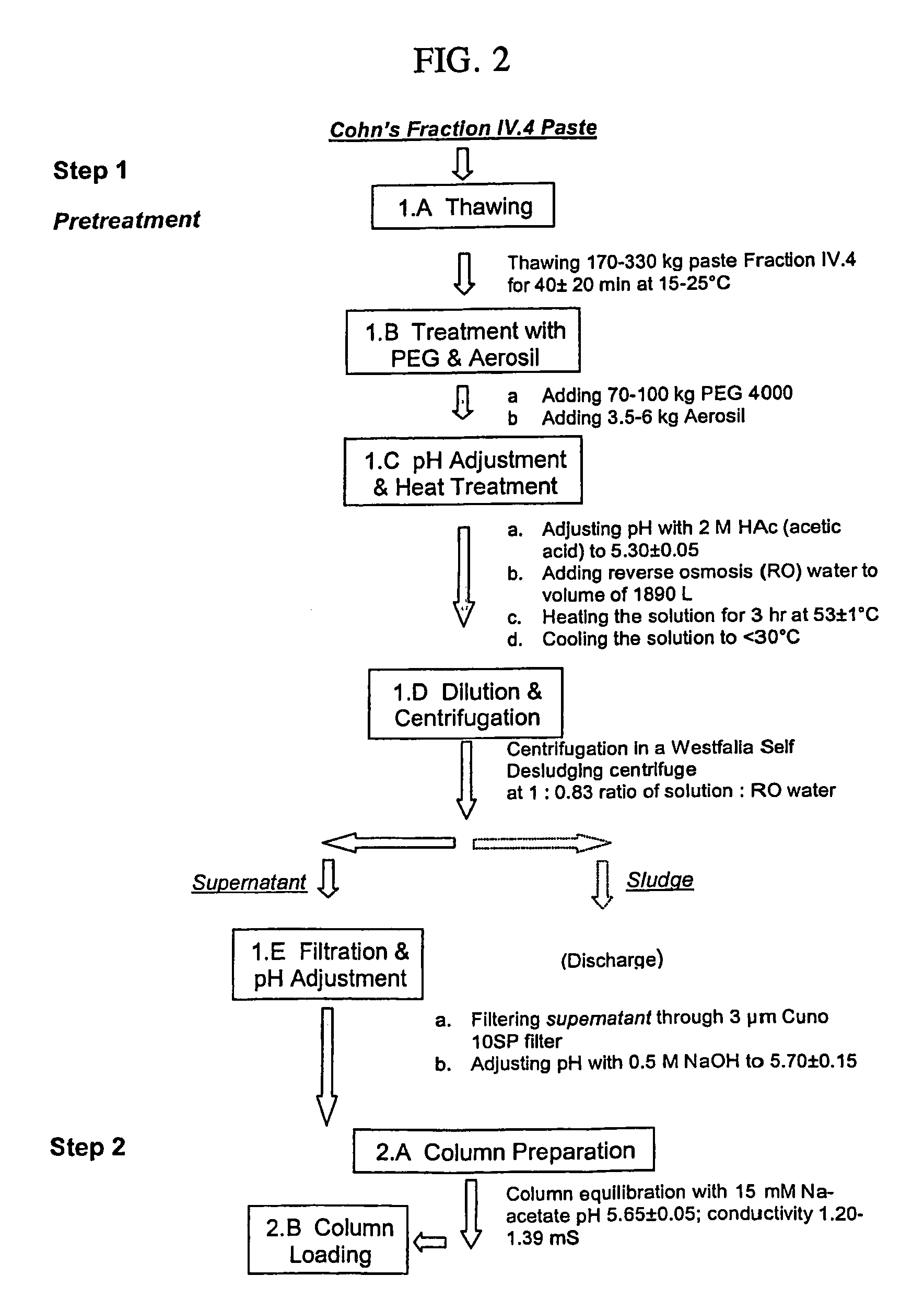Ultrapure transferrin for pharmaceutical compositions
a transferrin and human technology, applied in the field of ultra-human transferrin, can solve the problem that the iron binding capacity of the transferrin obtained is only about 80%
- Summary
- Abstract
- Description
- Claims
- Application Information
AI Technical Summary
Benefits of technology
Problems solved by technology
Method used
Image
Examples
example 1
Characterization of the Ultrapure Transferrin Product Obtained by the Method of the Present Invention
[0085]As will be recognized by those skilled in the art, and as shown in the above-described examples, the method disclosed in the present invention for the production of holo- and apo-transferrin is commercially feasible and simple. The process is also highly reproducible, as illustrated in the following table 1. Table 1 shows the product specifications, and the results obtained for 4 independent batches. Two of the batches are of holo- and two of apo-transferrin; however, since the majority of the process steps are identical for both, all the four could be considered except for the iron content. In the present example, all batches are lyophilized.
[0086]
TABLE 1TESTSPECIFICATIONRESULTSAppearanceWhite, lyophilized powderWhite, lyophilized(apo-transferrin)powderReddish, lyophilized powderReddish, lyophilized(holo-transferrin)powderSolubilityReadily soluble at 1% in waterReadily soluble...
example 2
Obtaining Transferrin-Containing Protein Solution Form Cohn's Fraction IV.4 and IV.1
[0088]By the method of the present invention, ultrapure transferrin can be produced either from Cohn's fraction IV.1 and IV.4. The processes according to the present invention are as follows:
A. Obtaining Transferrin-Containing Protein Solution from Cohn's Fraction IV.4 (Summarized in FIG. 2A)
[0089]170-330 Kg paste fraction IV.4 was thawed at 15-25° C. for 20-60 min. 70-100 kg PEG 4000 was added, together with 3.5-6.0 kg of Aerosil. The suspension pH was then adjusted to 5.25-5.35 with 2 M acetic acid, and it was diluted by the addition of 1890-liter reverse-osmosis water. The solution was heated at 52-54° C. for 3 h, and then cooled to below 30° C. After cooling, the solution Was centrifuged in a Westfalia Self Desludging centrifuge at 550-750 liter / h, and ratio of solution: reverse osmosis water of 1:0.83. Sludge was discarded; the supernatant was filtered through a 3 μm Cuno 10SP filter, and its pH...
example 3
Preparation of a Pathogen-Free Product
[0096]Prior to sterilization, the purified, iron-saturated transferrin solution, obtained either from Cohn's fraction IV.4 or IV.1, should be concentrated. Concentration was performed by ultrafiltration through 10 kD Millipore filter equipped with 6 μM Pall pre filter, until the solution reached 8-10 kg (approximately 15% of its original volume). The sterilization step was performed by filtering the concentrated solution through 0.2 μm sterile filter followed by 0.1 μm sterile filter. Virus inactivation was performed by pasteurizing the filter-sterilized solution at 59.5-60.5° C. for 10.5-11.5 h. After lyophilization and obtaining the final product as described herein below, a total aerobic plate count was performed. Colony forming units was at the range of <7 CFU / g (See example 1 herein above). Bacterial endotoxin should not exceed 1 EU / mg, usually found in the range of <0.005 EU / mg (see example 1 herein above). No mycoplasma growth should be o...
PUM
| Property | Measurement | Unit |
|---|---|---|
| pH | aaaaa | aaaaa |
| pore size | aaaaa | aaaaa |
| water content | aaaaa | aaaaa |
Abstract
Description
Claims
Application Information
 Login to View More
Login to View More - R&D
- Intellectual Property
- Life Sciences
- Materials
- Tech Scout
- Unparalleled Data Quality
- Higher Quality Content
- 60% Fewer Hallucinations
Browse by: Latest US Patents, China's latest patents, Technical Efficacy Thesaurus, Application Domain, Technology Topic, Popular Technical Reports.
© 2025 PatSnap. All rights reserved.Legal|Privacy policy|Modern Slavery Act Transparency Statement|Sitemap|About US| Contact US: help@patsnap.com



